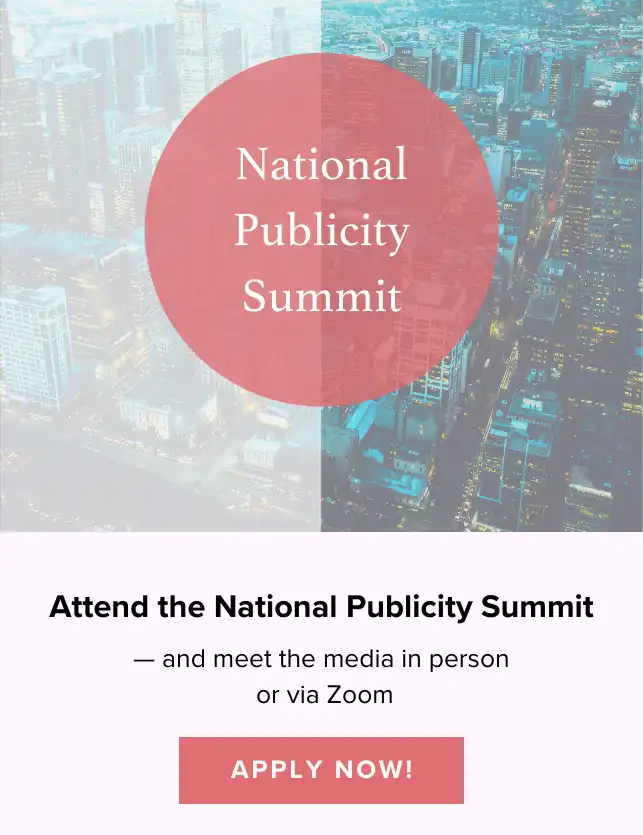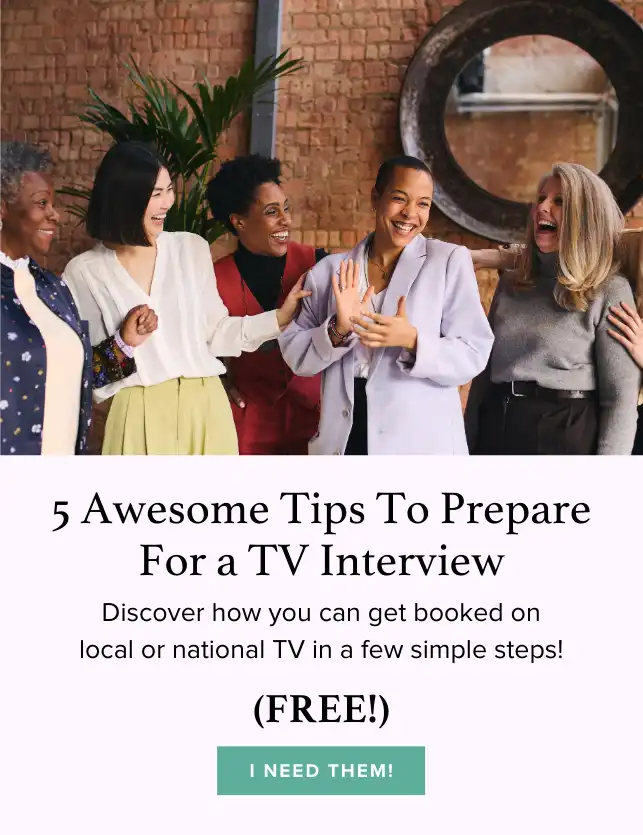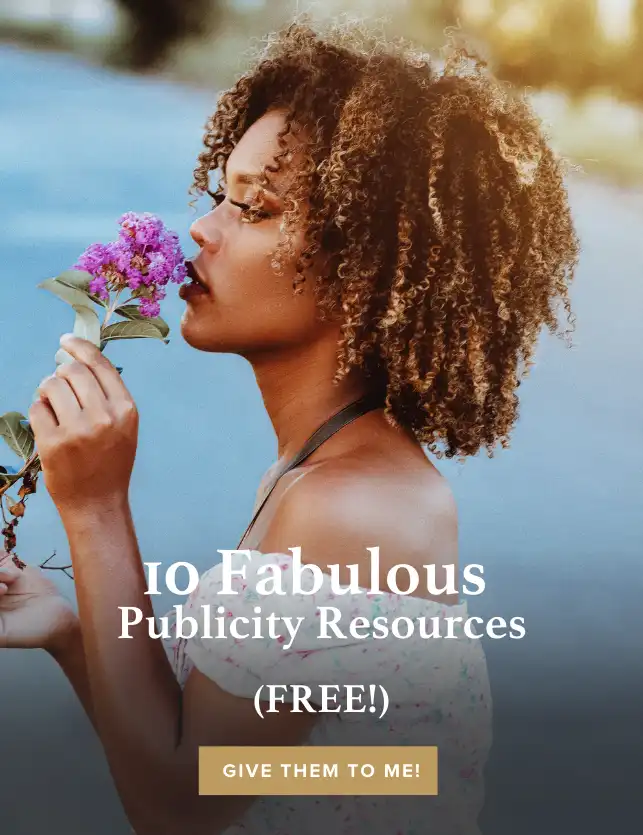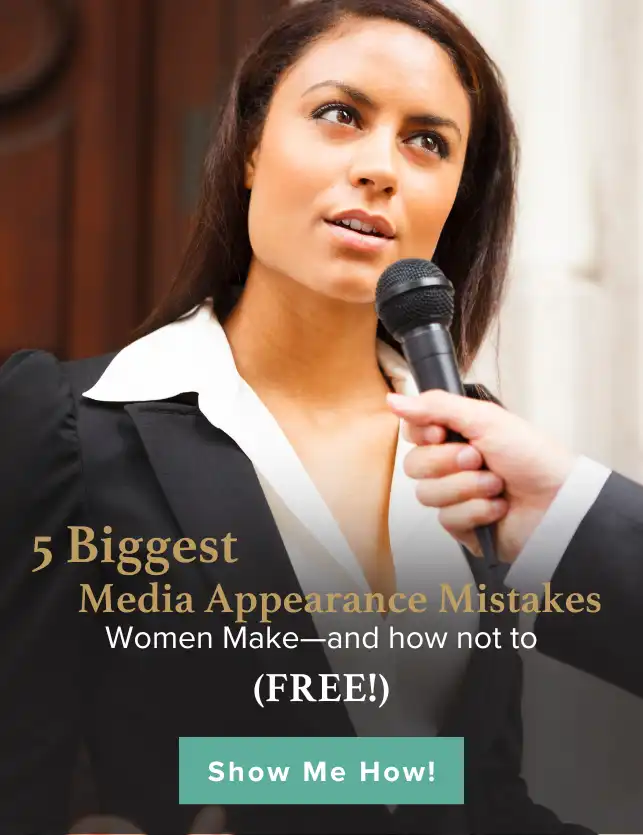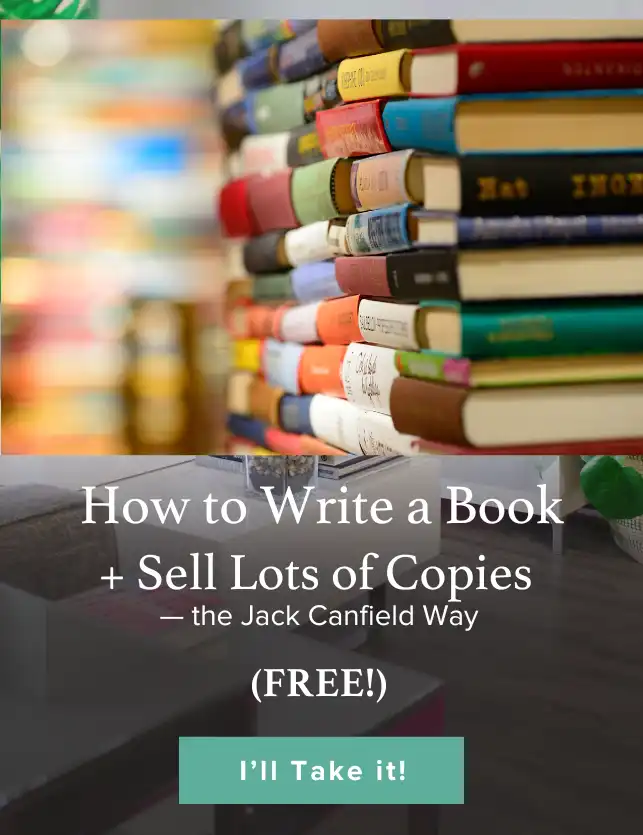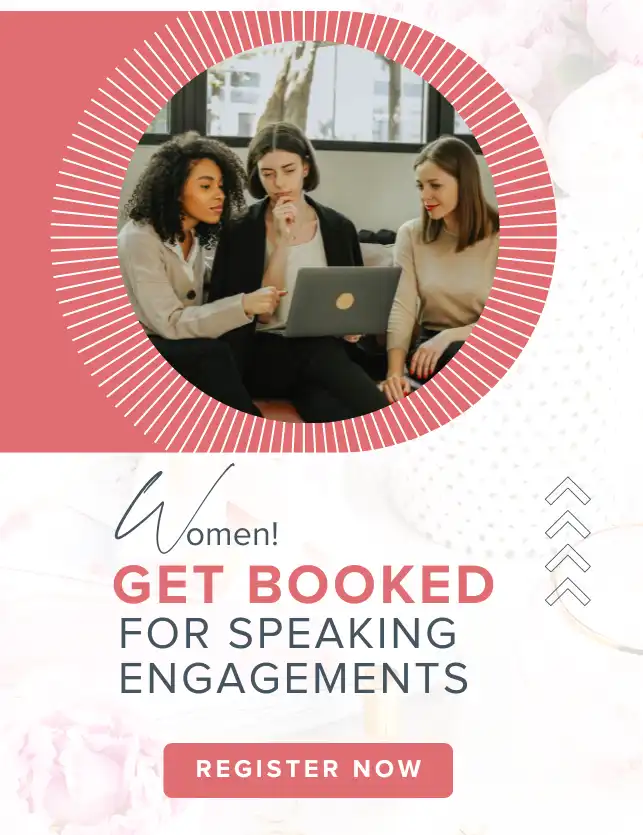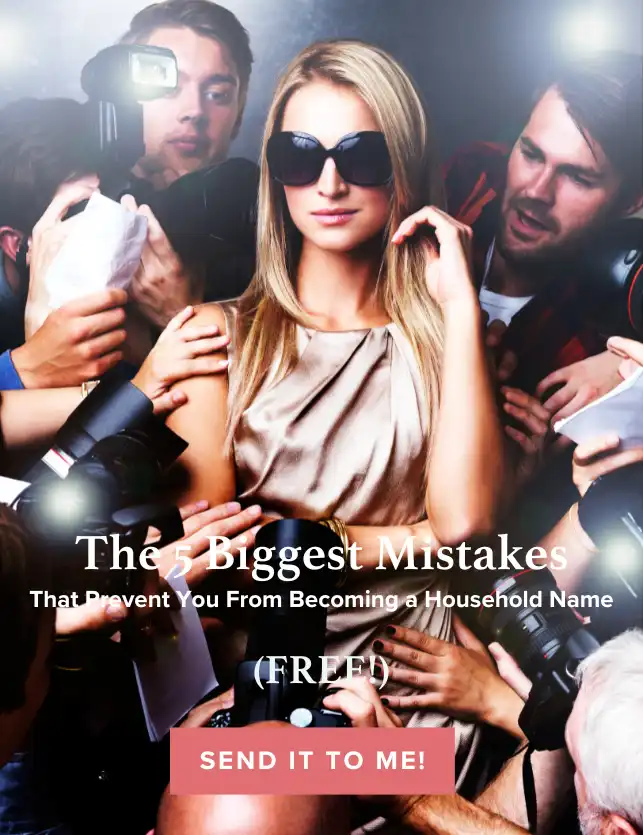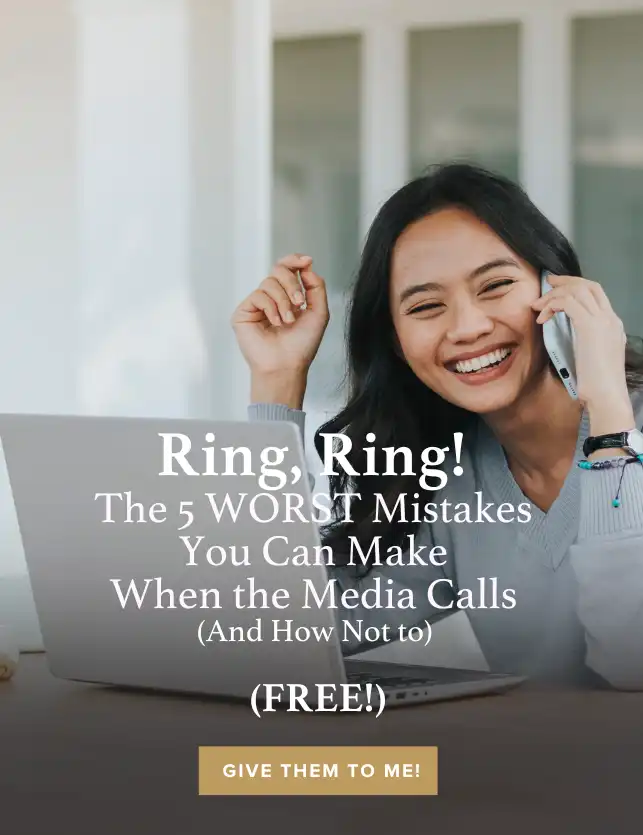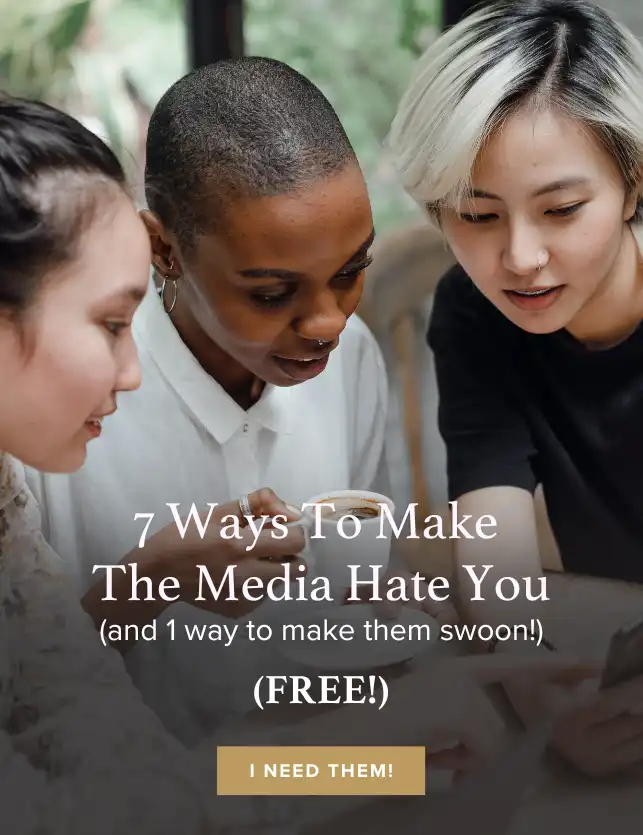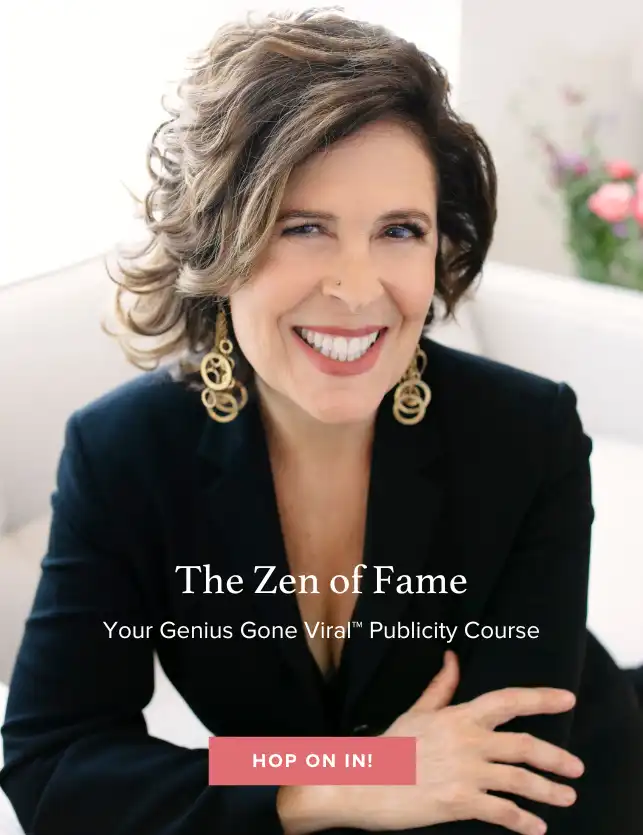Effective PR Tips for Business Promotion
Effective PR Tips for Business Promotion – Interview by Gabe Nelson – Solopreneur Money Podcast
Gabe Nelson: Hey solopreneurs, Gabe here today we have Susan Harrow of Harrow Communications Inc.. She is a media coach, marketing strategist, martial artist, and the author of Sell Yourself Without Selling Your Soul®. She’s going to talk about how to create messages so that the media will love you. I enjoyed this conversation a ton and I hope you will, too. Susan, thank you for being on the podcast.
Susan Harrow: It’s a pleasure. I can’t wait.
Gabe Nelson: I’m excited to have you on, you are going to teach us how to create messages so that the media will love us. Which media is one of those things a lot of us solopreneurs are like what the heck do you even do there? So I’m looking forward to learning from you today. But before we go there, like everybody else, I want to hear your story. Help me understand, where you come from where you’re at, and what brings you to today.
Susan Harrow: I was on the playground and I saw one kid on top of another kid beating the heck out of him. Then I saw it was one of my friends, one of my artsy friends. I ran over there and I yanked him off. And I said, “Stop it.” There was a huge crowd around and I said, “What are you all looking at.” To me, the bullies and this whole scenario around people encouraging that kind of bullying-ness just really got my goat. And I said to everybody, “Just get out of here.”
I was part of three different groups in high school. I was part of the artists, I was part of the jocks and I was part of the popular kids. This was one of my artist friends who was always picked on. I didn’t realize it in that moment but what I was doing is protecting the artists and protecting the beauty and protecting the people who didn’t really have a voice in the world. Who really had something to contribute. And they were considered more of our weirdos in high school, right?
Mention Your Ideal Clients During a Media Appearance – They May Be Listening.
Like now, they’re the innovators and the brilliant minds and those are the people that I work with today. The people who have something really to say. Sometimes it’s the introverts. Sometimes it’s the great innovators who are solving our most pressing problems. Those are my favorite kinds of clients. It’s people who are super creative and come up with these otherworldly ideas that we didn’t conceive of. But they’re solving some of the world’s biggest problems like sexual slavery, neurodiversity, civil rights, the food shortage. Those are my favorites.
And then my second favorites are the people who really have something to say but are nervous about saying it. Or they’re held back in some way. I mean, I wrote Sell Yourself Without Selling Your Soul®, because so many clients came to me and were afraid that they were bragging, begging, or whoring to get publicity. And I said it doesn’t have to be so. And that’s part of an internal process that needs to be shifted inside of you. Because doing PR and reaching out to the media, even a podcast like this, a podcast is media now, is as much personal development as it is professional development. So part of the process is internal.
Prepare Properly for Media Interviews By Shifting Your Mindset + Heart-set.
I work with clients on not just shifting mindset, but heart set, the physicalness of it. I’m a black belt in Aikido, Japanese martial arts, and I was a former tennis pro. I know you do lots of sports yourself. So you know that there are lots of practices, both mental and physical, combined, to give the feel of you and make sure that everything that you do, say, are, and think is in alignment before you reach out to the media. Before you reach out to a podcast.
So when things are in sync like that, you’re not actually drawing things outside of yourself, you’re aligning in yourself, your resonance, or your vibration to what you want. Then things naturally happen. And then behind the scenes (which we’ll talk about in a minute), there’s a lot of practice. Plan, prepare, and practice, to have that happen, and be able to have that happen under pressure.
Media Appearances’ Short, Medium + Long-Term Effects.
Gabe Nelson: Interesting. I’m looking forward to hearing that. Help me understand, how long have you been helping people with media?
Susan Harrow: 32 years, it’s 32 years now! So I started as a publicist. And what happened was, I could book people on all of the greatest places I’d booked them on, Larry King Live and Oprah and The New York Times and Wall Street Journal, Forbes, Inc, all of that stuff. And sometimes what would happen was, a great big nothing! That’s when I started really looking at what’s going on here. And I was hired as a publicist, just to book people but I started media training my clients. I said, it’s what you’re saying, that isn’t bringing you in the business.
Yes, we can have one line in the New York Times, which is a great credibility builder, but you want to get quoted more than one line. So there are certain things that you need to know in order to be able to express yourself in such a way that you’re going to draw in and create the kind of business and brand that you want in every media interview. So that it actually has an effect.
Sometimes media can’t be measured in an instant monetary effect. And I know this show is about money. But the money effect is also in credibility, connections, and partnerships. That’s future money. So there’s three steps of money, there’s now money, there’s intermediate money, and then there’s long-term money. I mean, I still have people in the olden days, when we were out speaking quite a lot.
Increase Your Visibility to the Media + Clients By Speaking + Being Seen.
I had just a recent client call me who saw me speak eight years ago who connected with me to hire me now. And I’m working with them to pitch investors for their seed round for an app that they’re creating, for example. But first she wanted to do some podcasts to sort of set the seeds to build up the audience for the app. But anyway, that was eight years ago. And I have that happen all the time. People said, I kept your card from 20 years ago.
That’s how media works as well. If you do it right, and put it on your website, it can be there forever. They can’t take away from you, that you’ve been in the New York Times, even if it was 10 years ago. You don’t need to put that part up there. Right. It’s just that you were there, the New York Times, or you were in Forbes or Inc.
Name Your Ideal Audience on a Podcast, Panel or Media Interview So They Recognize Themselves.
Gabe Nelson: Very interesting. So who would your ideal clients be? Who do you work with on a regular basis? Or is it all different kinds of people?
Susan Harrow: People often ask me that, and I think the core of it is, it’s something that interests me, but it’s often something like a socially conscious business. One just contacted me that I’m really excited about that hope it comes to client, which is a kind of fake cheese that stretches and tastes really great. I love cheese, but I’d like to eat less of it. But it’s like it stretches, it acts like cheese. It tastes like cheese. I’m like, I’m all in. But also, she’s got a philosophy of saving the environment. So I love that combination. I love the combination of food and the environment. It’s people who are really impacting others in a way that is significant.
So it really doesn’t matter to me if it’s cheese, or something else. Another one of my clients is in leadership. So she’s shifting people’s minds and having a readiness mindset, instead of having the feeling that change is not possible. And so my favorite clients are the ones who are shifting something important in the world. Anyone who has got a business, book, product, service, or cause. If somebody’s launching a book, I love that as well. So it really just is, if it’s something that interests me, and that can be anything from country music. It’s not my favorite kind of music, but I have been approached by country music, and it can be a new way to train neurodiversity in a company.
Gabe Nelson: Very interesting you said neurodiversity. I actually just interviewed someone the other day, and we talked about neurodiversity. I hadn’t heard of neurodiversity prior to that. From my understanding, it’s just a whole new way of thinking, is that a good way to understand it?
Don’t Shut Your Audience Out By Using Industry Jargon During Media Interviews.
Susan Harrow: It’s huge. My client is one of the first autistic lawyers. And one of the things that she’s interested in doing is having the people who are neurodiverse, or different in some way, shape, or form, create their own program. So that’s one of the things that she’s talking about. Like why are people like you and me creating programs for them, within a corporation? And she wants to shift part of the mindset of not just cherry-picking the people who have Asperger’s to work with us but for us to work with them too.
There was a whole CBS 60-minute segment on that. When I saw that I go, well, that’s really interesting. These people are put in a separate room, they’re not really melding into the company. They seemed like they were still separate from the company because they didn’t communicate in the same way because their way of communicating was so different.
And we need to learn that, not they need to learn us. I think it goes both ways. We also need to learn how they are communicating back with us. And I think that’s the interesting part of the whole mindset. That opens up to the way other people experience us.
I think that’s also a mindset of media. We’re in our own bubble. I work a lot with academics and people who have very lofty degrees and they speak in such a way that no one else can understand them. So we need to be able to speak so everyone can. That’s inclusivity, to be able to speak so everyone can understand you and get what you’re saying even if it’s really super complex.
One of the areas that I’m super interested in right now is Crypto and Bitcoin. I’m just starting to work with women investors because I just found it so fascinating. I didn’t even know that you could invest in all of these different ways. Like we own our own home, we’ve invested in property. But there are all these other variations of investments that I was just riveted by. So it’s wherever my interest goes. So those are the two new areas I’m delving into. Women investors in new ways, and Crypto and Bitcoin, because that’s going to be part of our future.
Gabe Nelson: So let’s move in. I know you’re starting to kind of lead into it a little bit. But what can you share with us on how to create messages so that the media will love us?
Ask Yourself These Three Questions Which Set The Foundation for Your Messaging and Talking Points.
Susan Harrow: The first thing is setting your deepest intention, how do you want to serve. I ask all my clients three questions.
1. What’s your deepest intention? How do you want to serve?
2. What do you want for yourself? Now what we’re looking at there is, personally, professionally, physically, financially, emotionally, and spiritually, because PR can open up that whole world. And really, really specific.
So I’ve got a client right now. She has a book out, but she’s really trying to shift the views on sexual abuse and those taboos. Part of what we talked about is she wants to connect with philanthropic organizations that are in alignment with her, but also celebrities. And she’s got a luxury event business. So that’s not far-fetched because her actual business, this is sort of a side thing. So we are talking about how we integrate that into the conversation. Also health and wellness, people, yoga, those kinds of people who are dealing physically, and emotionally, and mental health professionals with that. How do we create messages that align with those people? So they connect with us. So that’s part of the partnership.
3. And the last thing is, what do you actually want your audience to do? What action do you want them to take?
Of course, we want them to come to our website. But what do we want them to do once they’re there? Do we want them to buy our book or get an excerpt? We need to have a way of them getting connected to us and getting to know us better.
It used to take seven touches before someone would engage. And now it’s ten. I also want to say something else, the way that we’re moving is much more energetically. People are much more in touch with their energetic connection than they are with a logical connection. It’s always been that way.
I think it’s something that’s coming into the zeitgeist now more. So where I say you’ve got to have ten touches, sometimes people can come to your website and go, she’s the right one for me. And just like that! And that happens to me all the time, where I say to people, why did you choose to engage? And they said, I just knew you were right for me. I’m like, well, what was it? Sometimes it’s the raves page but sometimes it’s just they landed there, and they knew it. And I hear that so much. That’s when everything’s converging.
Package Your Messages So The Audience Understands + Connects With You.
Yes, your writing needs on the website need to be congruent, your picture, your images, your logo, all of those things conspire to create that right feeling. And then there’s all of the back work for it. So those three things, that’s the foundation for your messages. Then the kinds of messages that you want to have are stories, statistics, facts, and vignettes. You want to have a mix of those that are integrated into the conversation that shares what kind of people you want as your clients or your customers, or sales, or contracts, whatever that is.
And then you also want to have advice, something that people can concretely take away. So usually some kind of “how-to.” Sometimes that’s a bigger how-to, sometimes the how-to is shifting our perception. It does not always, “Take these three steps to master your money.” It’s also thought leadership, it’s about shaping our perception, asking the questions that open people’s minds and shape conversations.
Then we really want to have those stories, statistics, facts, so any kind of research you’ve done specifically or other research that’s out there that you can then package together in a new way. There’s no such thing as new, right, but it’s pulling together things in a new way. That’s the packaging of your messaging.
And then the last part is stories of clients’ successes that relate to the audience. And that’s key. You just don’t want to blurt out a success story, it’s got to have value to the audience. You want to integrate that thoughtfully into a point that you’re making. Let me just think of one as an example.
So one of my clients, and she’s one of the ones that I’m most proud of. She came to me and we laughed because we said she didn’t speak English. People say what language did she speak and I said, “Geek,” because she was academic and super smart. This happens a lot with mental health professionals and it also happens in the science realm. And it happens in the teaching realm, the academic realm, who are often the ones who are putting out new information, new research and new studies and engineers, that kind of thing.
So afterward, she said, “I went from geek speak to media speak.” She got booked in the Wall Street Journal, she got the New York Times, she was on Oprah’s Money Show, on and on and on. There was like, you know, a stack of like this many media, and may all major national media. And then what happened with her is that she also got some major contracts with the government. So we’re talking six-figure contracts with the government and with some big names in different industries and authors.
Getting Booked on a Media Appearance is just the Beginning. Make it Work for You and Your Business.
So she got into media. A lot of times people stop there. It’s like, well, where did you get in? Where were you placed? But I want to take it one step further. It’s not just where you’re placed, but then, how did you use that? Again, it’s not always a direct, quote, unquote, money result, but there is a result of being able to use that to expand your credibility and your expertise. So for her, it was these lucrative contracts, right? And then that credibility that’s always on her website, whenever anybody goes there. That’s often the tipping point, if you’re a speaker, for people to say, “Oh, you have a book,” that’s a tipping point.
And the second point is the media. Not a self-published book, either, it’s more credible if you have a traditionally published book. I think it’s great if you have a self-published book too, especially speakers can sell at the back of the room. But for credibility, there’s nothing like a traditionally published book. And the media logos and not the fake ones. I want to really distinguish that.
There are the fake media that’s out there right now, that I think is really important for people to know.
That is when people put those standardized logos, you see them a lot on LinkedIn that say like Fox News, blah, blah, blah. That’s not real media! What they’ve done is sent out a press release, and it’s popped up on MSNBC or CNN, or whatever site. That’s not media. You haven’t been quoted, you haven’t been interviewed. So that’s fake media. We want real media, where you have either been interviewed on a podcast, print, or you’ve been on a radio or TV show. Does that make sense?
Adapt Your Signature Stories For Higher Engagement During Your Media Interviews.
Gabe Nelson: Yeah, that makes total sense. So let’s say that one of my listeners is going okay, how can I turn this into a little bit of a, maybe a repeatable pattern? So what would something like that look like? I mean, if this were to be put into a systematic type of deal so that someone could either A) repeat it or B) delegated? What would that look like? How would that go?
Susan Harrow: Yes. In my course The Zen of Fame: Your Genius Gone Viral®, I have, I love templates, it’s a great starting point. Do you have to use them, no. We also have the 10 proven press releases within those that are concepts that are standardized press releases that you can use. So these are the kinds of things that, they’re not that necessarily easy to explain, I can explain one format. So is everything systematized? No, because not everything can be systematized, but what you can do is you can create these standards.
So I have a standard for a Signature Story. So I can tell you the format, and then you can see which one you fit into. And again, these are not the only ones. These are a couple of formats because the variety is infinite. For your Signature Story, why you do what you do is going to be the first question that anyone asks. Why did you write your book? Why did you start your business? So that format would be either something in childhood that you’ve carried through, that you’ve loved through the ages. It could be a hobby that turned into a business, that’s another format. It could also be an “aha” moment, something that you know, an insight that came to you.
Or it can be a dramatic shift in your life. A lot of times when people have a major illness or something has happened dramatically to someone in their lives, that has then inspired a business. But your Signature Story is why do you do what you do. So I told one of my signature stories at the beginning but I have lots more that fit the audience. So you don’t just need to have one. I’ll give you an example of I was training women investors in Cancun, I hope we can get back to in-person things and beautiful retreat centers like that again, and I shared with them this exercise and everyone can do this with the formula and format that I have because it’s fill in the blank. You just need to put it in.
So one of the women in that group who was a crime cleanup scene, so she was a former police person, and she was at a murder scene at a hotel and there was blood and whatever everywhere and the police were there leaving the scene. And the hotel owner said: “Who’s going to clean this up?” The police said: “Not us!” Voila! Her business was born. And now she has 48 franchises all over the country. So she saw a need, had the expertise since she was a police person, and then parlayed that into an amazing business.
Gabe Nelson: Very interesting. So she saw the need, and she fulfilled it.
Susan Harrow: Yeah. So that was another format that I forgot to say. What is the gap that you’re filling? It would be something as simple as, this is what happened. This is the scene that happened This is what I saw was a gap in the industry, in the business, and this is how I solved it. So that’s the format.
A Story Delivery Format That Most Networks Use and You Can Too!
So you asked how else can it be systematized. One of the things that I ask my clients to do is once we’ve created these stories, and we’ve refined them. And the process of that is very organic, I listen to the way that they speak naturally. And I start to shape it. And I share with them if there’s a format that fits what they’re saying versus the other way around. I don’t say try to make a story in this format. So a very common format that all of your listeners can use, that you’ll hear all the time on the news and shows is, headline 1, 2, 3, advice, step one, step two, step three, or way 1, 2, 3, whatever that is.
Then a lot of times people don’t do this, this is what I recommend. A wrap-up or epiphany to help shape the thinking. So tell me what I’m supposed to make of these three points. And that’s a super simple format. Again, you will hear that a lot on any kind of show when you start to just become aware of that.
So what I ask my clients to do once we’ve refined those stories is to put them in a format that’s easy for them to use. Some of my clients like to use Excel spreadsheets, but some like to use note cards. I have a very smart client who is an expert in hemp, a hemp historian who is revolutionizing the hemp industry, and who preferred to put things on cards. You’re not going to be shuffling those during an interview, but just having them out.
Having the headline is enough to be able to glance down before your interview, and be able to recall what you want to speak about. So that was easier for him because he’s more tactile. So my other client used spreadsheets because you can put them in order, then we can categorize them when you have different audiences. Sometimes we’re not just speaking to one audience. My one client who’s the leadership expert, works with financial firms, but she also has manufacturing and she also has consultants who are going to be taking her courses, like management consultants. So they’re going to fit in those different categories. And they’re going to be able to be flexed from 10 seconds or 20 seconds to about a minute. So those are a couple of ways to systematize and organise both in your mind and then on paper. Is that helpful?
Gabe Nelson: Yeah, that’s very helpful. So my brain then goes, Okay, so what’s next? So I’ve created some stories. And I’ve used some formats, whether I’ve downloaded them from your website, which I’m telling anybody that’s listening, if you would like to do that, we’ll have show notes. I’ll have Susan share her website and everything. So you can go grab that information. But let’s say we’ve got that created. So I’ve got my story, and I got my story down. What do we do with it? Where do I go with it?
Susan Harrow: Okay, so first, I want to say you have your story down, but you’re not going to tell it, in the same way, every time because I don’t want you to be a robot. Be always aware of things going on in the culture today and new ideas so you can make that story fresh. If we hear you on Gabe’s podcast, and then we hear another podcast and you’re saying exactly the same thing, you’ve actually lost credibility versus gaining. Even if you’ve told that story, we want you to tell it in a different way. So that’s where the flexibility and the spontaneity come in.
Practicing Through Roleplay Can Make Or Break Your Media Appearance.
So plan, prepare and practice to be free to be spontaneous. That said, the next step systematically is to actually do roleplay. So with all of my clients, first work on getting the sound bites down. And the same thing in my courses, we get the sound bites down, we get the core things that you think you want to say. And then you have to practice them in situ, in an actual situation. So first, we do it slowly. And then we create the questions that are going to lead us into those answers. Then we actually have to do them because the experience of it is completely different than doing it in your head. So you want the experience of it.
I can tell you, I’ve had one of my clients who he’s very famous, his book has been turned into a movie and all of that. Now he probably makes six figures with his speaking engagements. When we first did media training for NPR. Thank God it was edited, because he came back to me and said, “Oh, my God, this is so much harder than actually even in practice.” I heard the raw footage and I’m tearing my hair out, then thank you God, it’s going to be edited. We really needed to work on really getting those super crisp in a real-life situation.
And that takes quite a bit of practice. So that’s iteration. And then we look at once you’ve done it, we review that media appearance and say: What did you do well? And what do you want to shift for next time? So that’s part of the process and system, too, because we can be caught off guard.
The other part of the system is always working on worst-case scenarios and things that get us triggered, and being able to transition to the information. We need to be able to experience the emotional trigger because it’s not logical. We freeze, and then we don’t breathe and then we can’t function and can’t get to the brain. You want to go through the experience so you know what it feels like to freeze. And you know what it feels like to relax and do that. So that’s part of the system as well, is to create this consistent practice. Like anything, didn’t you tell me you were a snowboarder.
Gabe Nelson: Oh, yeah, I’m a snowboarder.
Susan Harrow: So you have probably been in unexpected situations in snowboarding, right? You try to anticipate, you know you’re going to have to avoid trees, you’re going to hit moguls, sometimes you’re going to be in powder too high. So you want to practice each of those different situations before you get into the main experience.
For example, if you’re claustrophobic and you’re in powder this high, you’re going to freak out, right? So you want to say, well, if I get in that situation, I know I need to breathe. I need to know I have a way to get out of being packed in that snow very quickly. In a way, that’s going to save my sanity, and it’s going to keep me safe. It’s the same situation in media.
Gabe Nelson: It’s a great example. So really, what I’m hearing is, that a lot of this is really doing a lot of preparation ahead of time, like getting your story figured out. Then practice so that when you are put in that media situation, whether it’s on a podcast, whether it’s on YouTube, whether it’s on a TV station, or on a radio show, or even in a magazine, is to really make sure that you have your story down. And then you’ve practiced so that it can come out as natural as saying your middle name. Is that what I’m hearing?
Susan Harrow: Yes, you want to practice it. So it’s natural, and it doesn’t sound like it’s rehearsed. Because we don’t want to hear the rehearsed Gabe or person. And we know when it’s rehearsed. And please never, never, never read it. It’s way better to bumble and fumble than it is to read and not get it right. But just get it out there because we won’t like you if you’re a reader. Or if it even sounds like you have read it and just blurting it.
Gabe Nelson: Basically reading it in your mind as you’re reciting it. Yes.
Susan Harrow: I hear that a lot, too. And I can always tell when people have their stories down and they do it. Some people do it super well. And other people. I’m like, “Oh, my God, that sounds so rehearsed.” It’s good. You got your point out, but we can hear it’s rehearsed.
Gabe Nelson: Very interesting. So if someone wanted to learn that from you, and we’ll get to that in a little bit of where they find you. Is that something that you work with people on their stories? Even if they’re not going on the media? I mean, do you help them with their sales process? Do you do stuff like that?
Intrigue Your Audience By Marrying Stories to Data During Media Interviews.
Susan Harrow: I do. I really focus on media. So I talked about panels, presentations, and meetings. So I’ve worked with leaders at billion-dollar corporations on how to communicate better. Which I love as well. So that’s the internal communication and presentations as well because it really is now it is media because now it’s almost 100% Zoom. I worked with one executive who would speak to 800 to 1000 people at once, on a Zoom-like platform. But he had three or four different audiences. So he really had to keep the interest of all of them, even though he needed to move through a certain set of criteria and reporting that he had to do.
So we really worked on how to keep each audience engaged while he was delivering that information and how to integrate it. He had such fantastic stories that he wasn’t using that made all of that data come alive. So it’s marrying that data to that.
So I work with people one to one, I also work with them in a mastermind in a group setting. And then they can take courses in The Zen of Fame by themselves. It’s self-paced. In case your audience is interested since you’re solopreneurs, what we’re doing with a publicist right now, is creating a group of people to publicize all at once that are in a specific category that’s really hot in the media today. So crypto is a hot category. Mental health is a hot category. Housing investment is the hot category.
So that’s something that’s kind of brand new that we’re doing an experiment on is pitching people who are like powerhouses in a particular category together. And then having an individual campaign. I often work with PR firms because I don’t do the booking. I just do the media training. I’m working with them to make sure that what they say is growing their business in the direction that they want when they have those opportunities.
And create the stories in the context that you’re going to be using them. So when I worked with a financial investor, he was on a lot of panels. So we strategized how to get the most time. Also there’s a strategy behind it. It’s not just what you say, but how you manage the questions and how you interact with the other panelists. And how do you intrigue people enough, so they keep coming back to you so you get the most time. So part of that strategy, it’s the same strategy for panels on TV too. But it’s managing yourself, always. It’s about managing yourself and mastering yourself, but it’s also about how are you connecting with other people in such a way that’s optimal for you and optimal for the host interviewers.
Gabe Nelson: Very interesting. Very good. So this is a podcast about money. And there are three questions that I ask every one of my guests. So my first question that I have for you is what’s the smartest thing you’ve ever done regarding money tell me that story.
Invest in Yourself and You Will Never Regret it.
Susan Harrow: The smartest thing I do consistently with my money is to purchase trainings with mentors that have exactly what I need. So it’s both programs. So I do purchase programs, but then I also invest in mentors because, for me, that’s the most important thing. When I was in tennis, I actually trained with Larry Stefanki and Steve Stefanki, who are now the Olympic coaches of I can’t remember who in tennis. [Andy Roddick). But that was something that I invested in. And also I worked in tennis as well taking lessons from Martina Navratilova’s doubles partner.
So I invest both physically in that and taking martial arts and those kinds of classes. So I invest physically and also in leadership courses, as well. So leadership and training courses, as well as mentorship. I was in a mentorship program for a year for how to grow my business, and it was as much mental as it was physical. So those are the smartest investments for me.
Gabe Nelson: So really, the smartest thing you’ve ever done with money was invested in yourself.
Susan Harrow: It really is. Yeah. Because growing yourself, I love what Jim Rohn said, he said, “Invest in your job, and you make a living, invest in yourself, and you make a fortune.” And he didn’t just mean money. He really meant everything. Right. And that, to me is the most important thing.
Gabe Nelson: Yeah, I completely agree. How about the biggest money mistake that you’ve ever made? And tell me that story.
Susan Harrow: I was in Italy, and I was approached by someone who had these beautiful designer watches. Cartier. I was going to live in Paris and he said all you need to do is transport these watches from Milan to Paris. I was super excited about it. I had $1,000 which was a gift from my parents to travel for a year in Europe. I gave him $800 to invest in those watches. We went to a guy’s house, who had literally a big piece of art on the wall, opened it up, there was a safe, and there was a gun in there. And I was like, I am over my head in this industry.
But I’d given him my money. He gave me the watches. I went to the address in Paris. And the man said to me, “I am so sorry. But these watches are fake.”
I had $200 to my name and I needed to find a place to live and exist, which I did. The biggest lesson is the reason was that I didn’t listen to my intuition. There were warning signs about investing in that. But I overrode them because I wanted my parents to be proud of me. I wanted to take care of myself, and I can make a living while I’m living in Europe. That clouded over my gut judgment. So for me, never again did I let my logical mind take over that gut.
Gabe Nelson: So it was a great lesson. But I gotta ask how did you survive in Europe? How long were you in Europe on $200? Or what did you do to then allow yourself to start making some money so that you could stay?
Susan Harrow: I relied on the kindness of strangers. I believe people are good and wonderful things happen. I was in a situation where I spent $1 a day on a quiche to eat. And then I went to some organization and I became an au pair and they helped me. And I found a family who wanted me to teach their children tennis. So it was a very wealthy, famous family, the Laperche Lock family. So they made all of the locks. I don’t remember the name of the locks in our cubbies but they do all the locks in Paris. I started training their kids on tennis and I had a place to live. So a couple meals a day. So that’s how I survived.
And then I also got a job, I met another au pair, and I got a job in the south of Italy. I really believe in baptism by fire, just doing things that you don’t know how to do. But I didn’t speak any Italian. She’s like, “All you have to do is dance with people and serve them drinks.” And so I learned how to say, “What would you like to drink?” in Italian. And then they would tell me and I wouldn’t know what they said. But I would write it down and bring it to the bartender. So I went there for the summers and did that. I really just made a little bit of money as an au pair and did fantastic things in Paris, went to movies, studied the language, and just enjoyed. So I was there for almost two years.
Gabe Nelson: Oh, my goodness. Wow. That’s a feat in Paris. Paris is very expensive. We’ve been to Paris here a couple of years ago. And then we were just in Italy here just recently.
Susan Harrow: Love those two places.
Gabe Nelson: Love those places. And how about the south of Italy? Were you in the Nice area?
Susan Harrow: No, I was in Calabria. That’s a whole other story because that was all mafia, and two people had already been shot at the pool. And I was at that hotel, where there were some scary people there. And there were definitely some super scary people, the 10 pounds of gold around their necks. And I was definitely manhandled more than one time by some really super scary people. And again, that’s where the danger and intuition come in. I knew when we were in a dangerous situation and we needed to get out because that was pretty scary territory there in Italy. But beautiful. So it was in Calabria.
Mastering Your Finances So You Can Do Good Work in the World.
Gabe Nelson: Okay. Interesting, very interesting. Well, I’m gonna move on what does mastering your finances mean to you?
Susan Harrow: I really thinking about this the other day because I have some lofty financial goals. I was walking just the other day, I was a little bit crabby. I texted my friend who has COVID, who’s having a really hard time, and I said, “I’m really kind of crabby.” And I can walk any time of the day that I want. And I said that is super. And yes, I can take off as much time as I want. So for me right now, because I’m really thinking about our future. So yes, freedom to be able to do what I want, when I want it, and take off and be with my friends and be with my family is the most important thing. I think most people would say that.
And I’m just thinking about, how much and I haven’t decided on the amount. But really, I want to be able to have the kind of clients that really inspire me, and that I’m learning as much from them, as they learn from me. And choose those clients and those situations wisely. Because it’s not really about the money. It’s about that energetic exchange with them. Then part of that exchange is the money.
My mentor was talking about, well, Susan, if you could have one client who paid you $100,000 a year in each client, wouldn’t that be better than people paying you like, $10,000 total? And I’m like, Yes. And that is the kind of client who would value, not the hourly, but would value, the insights and the exploration and the growth both in their business in themselves, in me. So to me, that’s the kind of investment that I’m also looking at, for my money. And looking at how am I going to set that up for the future. That’s kind of still in flow and flux. I don’t have a solid answer, other than I know that I want to protect the lifestyle that I have now, and I’m not willing to shift that for an amount of money, really.
Gabe Nelson: I think what I hear from you, and I’m gonna just take it a little step further. What I’m hearing is, you want to be set in a way or have your finances in a way that would allow you to work with only the people that you want to, that energize you and inspire you. Is I want to hear?
Susan Harrow: Thank you for putting it into a soundbite for me so easily. Yes. And that’s what I do.
Gabe Nelson: Yeah, perfect. Absolutely perfect. So how can my listeners find you? How can they find you?
Get Started on Your PR Journey with These Offers.
Susan Harrow: They can find me on prsecrets.com. And I have lots of free things for you under goodies. And I also have, as you’ve heard The Zen of Fame: Your Genius Gone Viral® course, where you kind of work with me one-to-one. So all of that’s available on prsecrets.com. And I really encourage you I do have a lot of information on there. So you can start with the 100-Word Email That Can Get The Media To Call You or one of the most popular ones.
If you want to start slow and soft and you haven’t done a lot of podcasts or broadcasts, you can start with the 50-plus I think we’ve got like 80 now, editorial calendars which is getting in print. So that’s a really nice way to go. So print and blogging are very gentle to begin if you’re a writer, and then you can start with podcasts and your local TV and move up from there. So there’s something for everyone at every stage. And there’s something for introverts and extroverts. So I invite you to jump in wherever, whatever resonates with you.
Gabe Nelson: Perfect, perfect. And anything else you would like to share.
Susan Harrow: I would like to share that right now because we all need to communicate on camera, whether we want to or not, that we do want to start to develop our presence, and our positioning and our packaging, and our whatever we want to communicate, on a camera. So whether you start to create videos, start with podcasts, like with Gabe, or other people who are actually in your particular industry or field, to begin to do that to get acclimated to this. I don’t think we’re going to be changing back from virtual anytime soon. So we want to have those skills and that kind of comfort level on how to manage ourselves. Master ourselves to master the media.
Gabe Nelson: That’s fantastic. I really appreciate you being on solopreneur money, Susan.
Susan Harrow: Thank you so much.
Gabe Nelson: Thank you have a great day. Well, solopreneurs, I hope you enjoyed that conversation as much as I did. And have got a little better understanding of some things you can be doing to help yourself get into the media, or once you’re there, how to shine.
My three takeaways:
One is to master yourself to master the media, meaning you got to work on yourself, make sure that you’ve got yourself figured out so that you can show up authentically be you so that the media will love you.
Number two was to make sure you roleplay the situations and even your trigger points, things that might actually trip you up would be a great idea to practice, practice, practice so that you’re ready when that time comes.
And the third one is to start now just get yourself booked, whether it’s reaching out to a podcast, whether it is to reach out to the local media, whatever it might be, just start so that you can then start getting yourself ready to get into the media.
Check out our PR and Media Training Workshop to Jumpstart your Publicity
Gabe Nelson Bio
With almost three decades in the financial services industry and more than a decade as an independent small business owner, Gabe Nelson has established a thriving practice and solid reputation in his industry working with self-employed professionals and solo-entrepreneurs. Gabe is the bestselling author of The Solopreneur’s Money Manifesto: How to Master Your Finances and Create the Life You Want, and hosts the popular podcast: Solopreneur Money.
Check out our PR and Media Training Workshop to Jumpstart your Publicity
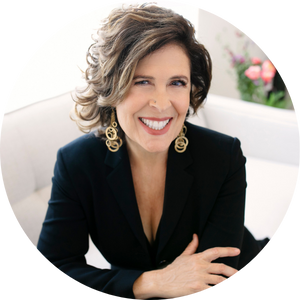
Like what you read? Share it!
Disclosure: Some of the above may be affiliate links that I will be compensated for at no cost to you. They are products or services I’ve either used, vetted or trust. Enjoy!
WE THOUGHT YOU’D ALSO LIKE THESE POSTS





